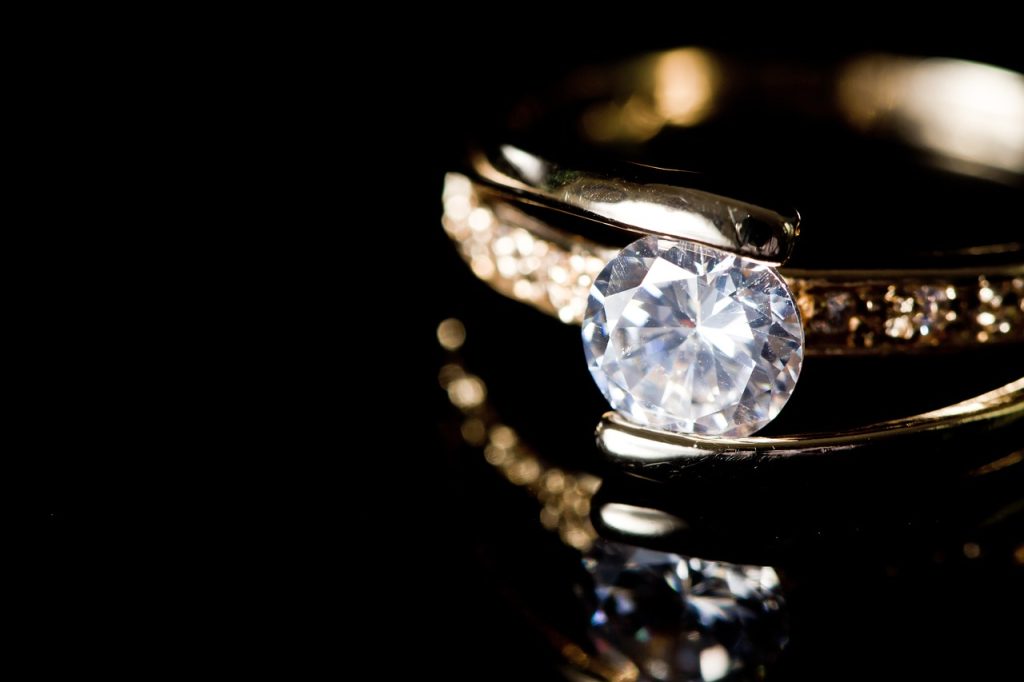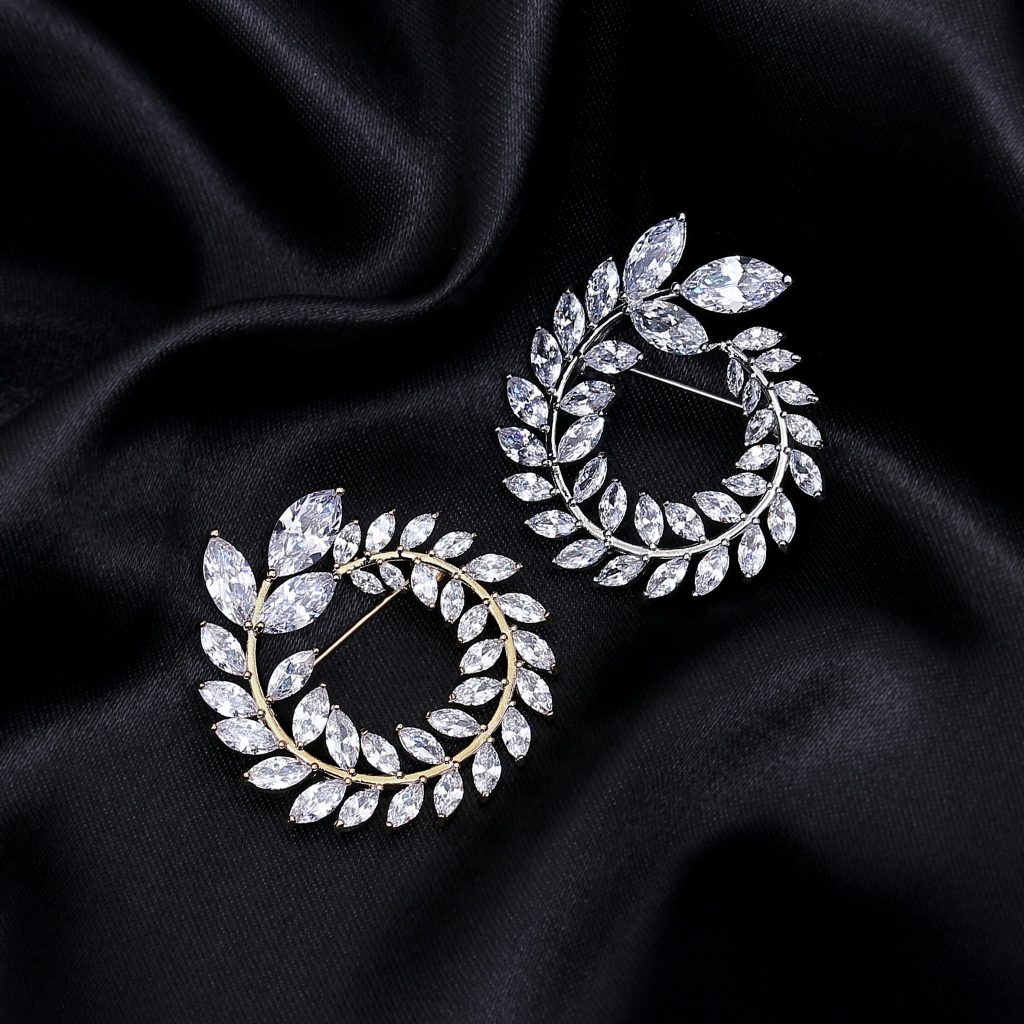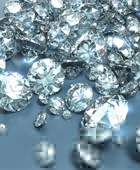The Concept of Recycled Diamonds
Recycled diamonds, also referred to as reclaimed or repurposed diamonds, are gemstones that have been previously owned and are returned to the market through resale, inheritance, or re-cutting. Unlike newly mined diamonds, these stones are not extracted from the earth but rather re-enter circulation after being removed from existing jewelry or estate collections. Their inherent durability makes them especially suitable for reuse, as diamonds are among the hardest natural materials and do not degrade over time. Consequently, a recycled diamond can be just as brilliant and valuable as a newly mined one if properly assessed and maintained. They are typically re-certified by gemological laboratories to confirm their quality before being sold again, often as loose stones or set into new jewelry designs. This process ensures buyers receive assurance of authenticity and specifications such as carat weight, color, clarity, and cut.

The Role of Recycled Diamonds in the Circular Economy
A circular economy promotes resource efficiency, waste reduction, and the continual use of products and materials. Recycled diamonds align perfectly with this model by eliminating the need for new mining and reducing the environmental and social toll associated with diamond extraction. Traditional diamond mining can result in significant land degradation, water pollution, and carbon emissions. By contrast, recycled diamonds bypass these ecological impacts entirely, contributing to a more sustainable industry model. Moreover, recycling diamonds lessens dependency on finite natural resources and encourages consumers to think differently about ownership, value, and longevity. Within a circular economy framework, recycled diamonds are not only environmentally advantageous but also economically logical, as they retain value without requiring additional resource input. This aligns with broader global efforts to promote sustainability and responsible consumption, particularly in industries historically associated with environmental degradation.
Environmental and Ethical Impacts of Diamond Recycling
One of the most compelling reasons for considering recycled diamonds is the reduction of the environmental footprint typically associated with diamond mining. Mining operations, especially in ecologically sensitive areas, can lead to soil erosion, deforestation, and ecosystem disruption. Additionally, the carbon emissions generated by mining equipment and logistics are significant. On the ethical side, the diamond industry has long faced scrutiny over so-called “conflict diamonds,” which are mined in war zones and sold to finance armed conflict. While certifications like the Kimberley Process aim to prevent such stones from entering the market, their effectiveness has been questioned. Recycled diamonds, by contrast, are inherently conflict-free since their provenance is often traceable and does not rely on new mining operations. This makes them appealing to socially and environmentally conscious consumers. The growing demand for ethical alternatives in luxury goods further amplifies the relevance of recycled diamonds within today’s conscientious consumer landscape.
Economic Dynamics and Market Value
Despite being previously owned, recycled diamonds often retain comparable market value to newly mined diamonds, especially when their quality and grading are properly preserved. The global diamond market does not drastically differentiate between recycled and new stones if the diamonds meet the same gemological criteria. However, there are subtle pricing dynamics that can influence valuation. For example, a recycled diamond may be slightly less expensive than a comparable new stone, not due to lower quality, but because of consumer perceptions and the lack of branding or retail markup. Furthermore, many recycled diamonds are sold through secondary markets, including estate sales, auctions, and specialty jewelers, which may offer them at more competitive prices. From an investment perspective, recycled diamonds can offer strong value retention, especially in times of economic uncertainty when consumers prioritize assets with intrinsic value. They also present opportunities for resale, particularly if market demand continues to favor sustainable and ethical options.
Quality Assurance and Certification
The resale of recycled diamonds heavily depends on proper quality assurance practices. Just as with new diamonds, the Four Cs—cut, color, clarity, and carat weight—are critical in determining a recycled diamond’s market value. Most recycled diamonds are re-evaluated and often re-certified by reputable gemological institutions such as the Gemological Institute of America (GIA) or the International Gemological Institute (IGI). This process ensures transparency in the resale market and allows buyers to make informed decisions. Additionally, recycled diamonds may be recut or repolished to enhance their appearance and marketability, especially if the stone has suffered minor wear over time. Sellers and buyers alike benefit from certifications and appraisals, which serve not only as validation of quality but also as tools for insurance, resale, and investment. The robustness of the diamond’s documentation can significantly influence resale value and buyer confidence, making certification a key element in the recycled diamond ecosystem.

Consumer Trends and Shifting Preferences
In recent years, there has been a noticeable shift in consumer behavior within the jewelry market, largely driven by growing environmental awareness, ethical concerns, and economic pragmatism. Millennials and Generation Z, in particular, are more likely to prioritize sustainability and transparency when making high-value purchases, including diamonds. As a result, recycled diamonds are increasingly perceived not only as an eco-friendly alternative but also as a fashionable and thoughtful choice. These consumers often view ownership in terms of story and legacy rather than novelty, making the history of a recycled diamond a point of interest rather than a drawback. In addition, vintage and antique jewelry styles, which often incorporate recycled stones, are enjoying a resurgence in popularity. This trend is further supported by high-end brands and independent jewelers that now actively promote recycled diamonds as part of their ethical sourcing strategies. Overall, consumer sentiment is aligning with the circular economy’s principles, propelling demand for recycled stones in both traditional and modern jewelry contexts.
Challenges in the Recycled Diamond Market
Despite their benefits, recycled diamonds face several challenges that can complicate their integration into the mainstream diamond market. One significant obstacle is the inconsistency in resale pricing and valuation, which can vary depending on market conditions, demand for specific stone characteristics, and appraisal standards. Unlike gold, which has a universally recognized melt value, diamonds are valued based on complex criteria that can lead to discrepancies in offers from different buyers. Moreover, not all jewelers or buyers are equipped to assess or handle recycled diamonds professionally, which may limit resale options for individuals. Another challenge lies in consumer perception—while attitudes are changing, some buyers still associate new diamonds with prestige and symbolic value, making them hesitant to consider previously owned options. To address these issues, greater transparency, standardized valuation protocols, and consumer education are essential. Industry-wide initiatives that promote the resale and certification of recycled diamonds can help legitimize and expand this market segment further.
The Role of Technology in Supporting Diamond Recycling
Technology is playing an increasingly important role in facilitating the recycling and resale of diamonds. Advanced gemological instruments now enable highly accurate assessments of a diamond’s quality, origin, and authenticity. Laser inscription, for instance, can link a stone to its original certificate, providing a secure identity that persists across multiple ownership cycles. In addition, blockchain technology is being explored as a method for creating tamper-proof digital records of a diamond’s journey from its origin to each successive owner. This level of traceability can increase consumer confidence and enhance the perceived legitimacy of recycled diamonds. Online marketplaces also make it easier for individuals to sell or buy pre-owned stones, offering appraisal services, secure shipping, and digital certificates. These platforms lower the barrier to entry for consumers interested in buying recycled diamonds, while also creating scalable opportunities for dealers and retailers. In short, technological advancements are helping address key frictions in the recycled diamond supply chain, making it more transparent, efficient, and accessible.
Recycled Diamonds in the Luxury and Investment Landscape
Recycled diamonds are not merely a niche sustainability solution—they are increasingly being recognized as a serious player in both the luxury goods market and the alternative investment landscape. Luxury brands have started incorporating recycled stones into bespoke collections or sustainability-focused product lines, signaling a broader industry shift. At the same time, some investors view diamonds—particularly those with unique characteristics or historical provenance—as portable assets with the potential to appreciate in value. Recycled diamonds, especially those with high-quality certification and documented origin, can serve as a compelling investment choice for individuals seeking tangible, durable assets. While they do not offer dividends or passive income like financial instruments, their physical permanence and cultural value continue to hold appeal. Additionally, the fact that recycled diamonds do not require new mining inputs makes them more resilient to the reputational risks associated with traditional diamond investments. As both luxury consumers and investors seek ethical and sustainable alternatives, recycled diamonds occupy a growing and respected position in the market.
Future Outlook and Industry Integration
Looking ahead, the role of recycled diamonds in the global diamond industry is expected to expand significantly, especially as circular economy models become central to policy and business strategy across sectors. More jewelers are likely to integrate recycled stones into their supply chains, not only to meet consumer demand but also to reduce dependence on mined resources. This may include formal buy-back programs, recycling partnerships, and increased investment in certification and resale infrastructure. Furthermore, educational campaigns and transparency initiatives could help normalize the concept of recycled diamonds, making them as mainstream as other sustainable luxury alternatives. Governments and industry bodies may also play a role in encouraging the adoption of recycled diamonds through incentives or sustainability regulations. In the long term, widespread adoption of recycled diamonds could transform the diamond market from a linear, extractive system into a circular, regenerative one—benefiting not just the environment and society, but also adding resilience and adaptability to the industry itself.




